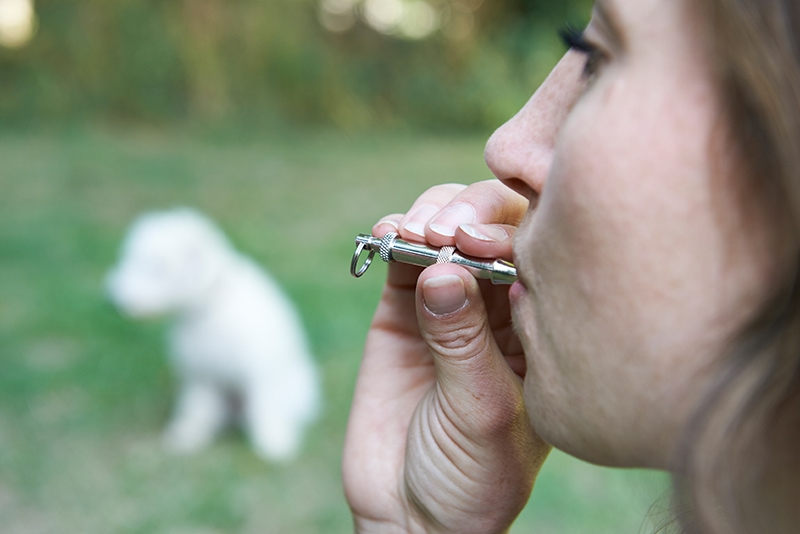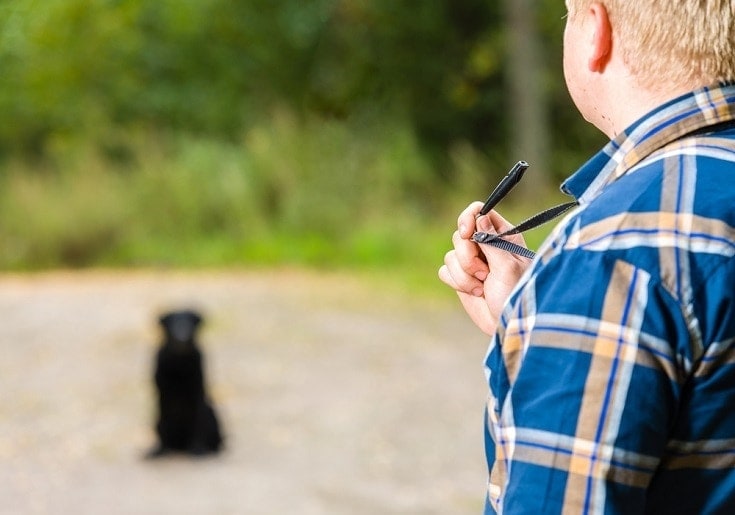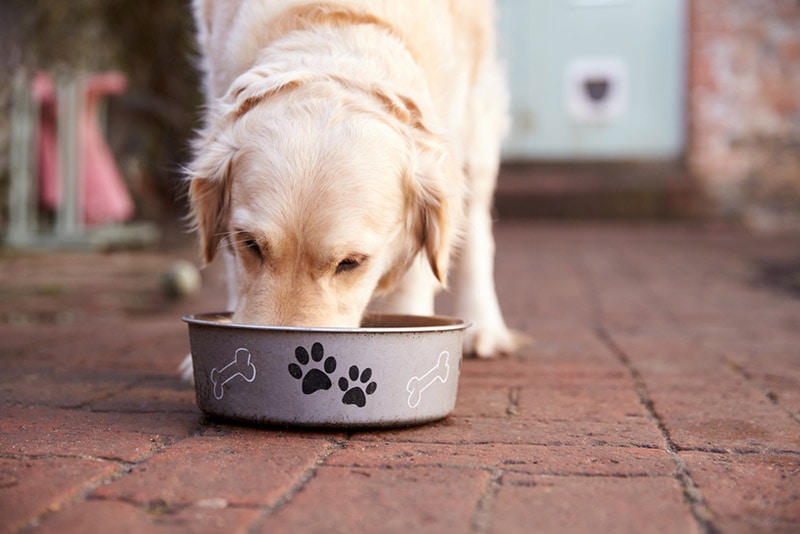How to Select the Right Dog Whistle for Dog Training: 11 Expert Tips
By Ed Malaker
Updated on

Training your pet can be great fun, and it will help you form a strong bond. There are many tools for training, but the dog whistle is one of the most useful. Selecting a whistle for training is an important decision that can significantly impact your training effectiveness, but with so many brands available, it can be difficult to sort through them all to find the best one. If you are having trouble, keep reading for several expert tips to help you make an informed purchase.
The 11 Tips How to Select the Right Dog Whistle for Dog Training
1. Frequency
Dog whistles produce a higher sound than humans can hear, so we can’t hear the difference between various ones. However, many dogs respond to certain frequencies better than others, so it’s a good idea to look for a whistle that enables you to adjust the pitch to find something that works for your pet. Being able to change the frequency also allows you to use different tones for different things. For example, you can use one tone for training and another for reprimanding.

2. Quality
Invest in a high-quality whistle made from durable materials. It will last longer and withstand the rigors of training. Choose another model if the whistle that you are looking at seems flimsy or is mostly thin plastic.
3. Loudness
While most people will naturally try to find the loudest whistle, that might not always be the best option, since your dog might be too sensitive to it. Some whistles will enable you to adjust the volume, or you may need to experiment with a few different brands to find the best one for your pet.

4. Ease of Use
While you simply need to blow into old-fashioned whistles to get them to work, many modern brands use electronic methods to produce the sound. While some only require pressing a button, others might have complex menus that you need to navigate to find the right mode for your situation. While these features can be helpful, they can also make the whistle more difficult to use, so ensure that you can operate it before buying it.
5. Weather Resistant
If you are using a modern electronic dog whistle, ensure that it is water resistant, as you may need to deal with all types of weather during your training sessions. You will also need a waterproof whistle to teach your dog swimming or for other water sports like paddleboarding or dog diving.

6. Personal Goals
When choosing your dog whistle, consider your needs. A silent or ultrasonic dog whistle produces a sound outside the human hearing range and is ideal for communicating with your dog over long distances. It can also be a great way to train your dog in an area where many neighbors would be upset if you used an audible whistle. However, since you can’t hear a dog whistle, you have no idea how loud it is or if it is even working without a reaction from your pet, and in some cases, the noise can be harmful and painful. An audible whistle can work just as well in many situations, and it’s easier to find whistles that sound different and are less expensive. But they don’t have as wide a range, so they may not work for dogs that like to run off.
7. Consistent Sound
The whistle that you choose should produce a consistent sound that your dog can identify immediately. Some units might start to create a sound that drops in pitch or otherwise changes as the batteries die, so you’ll need to change them frequently so this problem doesn’t affect your training routine, especially if you are using a silent whistle and can’t hear when the sound changes.

8. Washable
Another important thing to look for when choosing a dog whistle is washability. Your whistle can get quite dirty during your training sessions, so you must clean it frequently so no bacteria has a chance to grow.
9. Breed
When looking at dog whistles to get, consider the breed of dog that you will be using it with. Some dogs, such as the Bassett Hound and many other hounds, have sensitive hearing, and a dog whistle might be uncomfortable and painful. An audible whistle may be more suitable for these dogs because you can better control the volume.

10. Design
The design of your whistle might be more important than you might think. With constant use, you will appreciate an ergonomic design that makes it easy to hold and use.
11. Additional Features
When selecting a dog whistle, check for any other features that you think might be helpful. For example, some whistles have clips for convenient carrying or storage, which can add to their overall usability and practicality.

Summary
When you’re looking for a dog whistle, we recommend considering your dog’s breed and needs. Ultrasonic and audible dog whistles are both useful, and each has its pros and cons. Ultrasonic whistles are more effective at long range, and many operate at the press of a button. Certain advanced ones have a wide range of features that can benefit your training, including settings to change frequency and volume. However, since you can’t hear these whistles, you won’t know whether they are too loud or broken. Audible whistles are easy to hear, so you know that they work, and it’s easy to find ones that sound different to find something that suits your pet. However, they can annoy the neighbors and aren’t as effective at long range.
Featured Image Credit: SpeedKingz, Shutterstock











